Small Non-Shedding Dogs – Small Dog Place
By Janice Jones | Last Updated 02-06-2020
Did you know that there are no true small non-shedding dogs? The good news though is there are many that are low or minimal shedders.
As people, we do not think of ourselves as “shedding” hair but we do loose hairs occasionally and the proof is in our hairbrushes. This is the same for most small breed low shedding dogs.
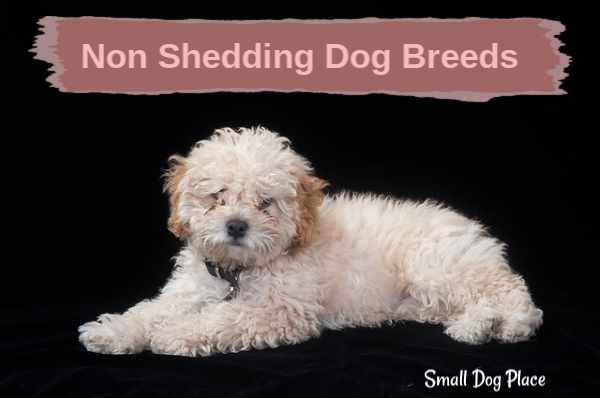 An example of Small Non-shedding small dogs is poodles.
An example of Small Non-shedding small dogs is poodles.Most people looking for a small breed dog that does not shed
want to know that their house will not be filled with stray dog hairs. I have to admit I am one of them.
It is much more fun to spend time playing
with a dog than cleaning up after it.
Don’t you agree?
31 Small Dogs That Don’t Shed
You may also have allergies to dog dander and hope to find a
dog that you can comfortably live with.
Remember
that most allergy sufferers are affected by a dog’s dander rather than the
quantity of hair the dog might have.
What are the Small Non-Shedding Dogs?
Affenpinscher
The Affenpinscher or “Monkey” dog has a thick bushy coarse
coat that does not usually mat as some other long coated breeds.
Unlike most other breeds that require a
smooth, neat appearance, the Affenpinscher is supposed to look natural and
well, shaggy.
They don’t shed, so a
little grooming is still required, but this is a suitable breed for someone who
doesn’t have hours to spend on grooming, yet want a dog that doesn’t shed.
American Hairless
These dogs are a relatively new addition to the world of dogs and started almost by accident when a little hairless puppy was born into a litter of rat terriers.
These dogs do not shed because there is nothing to
shed. Skin care is needed though.
Frequent Bathing is recommended followed by
lotion to keep the skin in good shape.
Owners also use baby wipes to wipe down their body between baths. For anyone who wants a dog that doesn’t shed,
this is an ideal choice.
Read about the American Hairless Terrier
Australian Terrier
If the idea of a smart, fun-loving, adventurous dog with a high energy level, that doesn’t shed, then this could be the breed for you.
Just like most all terriers, the Aussie has an outer coat
that is harsh, straight, and dense.
Their inner coat is short and soft.
They need brushing and trimming to keep the coat manageable, but their
hair will not be found lying around your house.
Read about the Australian Terrier
Bedlington Terrier
A dog in “lambs clothing” is an apt description for these
dogs. They have a soft fuzzy coat that
requires plenty of attention, but you are not likely to see stray hairs around
your home.
They are a little larger than
many of the small breed dogs on this site, but still fit the description of a small
dog weighing in at about 18 to 22 pounds.
Read More about the Bedlington Terrier
Bichon Frise
Here is a sweet, happy go lucky small dog that not only doesn’t shed, but also is a perfect choice for people who suffer from allergies.
The American Kennel Club considers the Bichon less
hypoallergenic than most breeds and like the poodle, they are practically none
shedding.
Grooming these dogs takes time,
and a daily brushing is usually necessary to keep their coats free of mats and looking
their best.
Bolognese
The Bolognese sports a tufted cottony coat that is a single
layer with no undercoat. Dogs with no
undercoat do well in warmer climates.
Grooming can be time consuming because that beautiful soft coat needs
daily brushing to keep it looking fabulous.
The hairs will come out in the brush, but you are unlikely to see them
covering your best furniture.
Border Terrier
According to the AKC standard, a border terrier should have “A
short dense undercoat covered with a very wiry and somewhat broken top coat
which should lie closely, but it must not show any tendency to curl or wave.
As with other terriers, their hairs may “die”
but they don’t shed. These dead hairs
are pulled out or striped periodically to maintain the natural appearance of
the dog.
Brussels Griffon
We have listed the Brussels griffon here, but it is the
rough coated griffon that does not shed.
This type of coat has hairs that grow out to be about three or four inches
and then dies. New hair grows in the
hair follicle. Regular brushing
brings out the dead hairs and keeps them off your furniture.
Show dogs are stripped, but pets usually visit
the groomer to be clipped.
The smooth coated variety has a seasonal shed and could not be considered one of the small non shedding dogs.
Read about the Brussels Griffon
Cairn Terrier
As a general rule, terrier type dogs don’t shed, and as you can see by this list, there are many small breed dogs in this category.
Terriers also have a dense outer coat that is harsh and meant to withstand tough weather conditions which is why they were developed in the first place.
Cairn terriers like others terriers require grooming, but as a general rule of thumb, the terrier group as a whole is a safe choice for those who want a small non-shedding dog.
Chinese Crested
We usually think of the Chinese Crested as being hairless, and there is a variety that is nearly hairless. The other kind of Chinese Crested has hair that can grow to a medium length.
Both can be born in the same litter. The hairless variety requires additional skin care and protection from the sun. Both types are generally considered low shedders and safe for those suffering from allergies.
Read about the Chinese Crested
Coton de Tulear
Like most other long-haired dogs, the Coton has a thick coat that feels like cotton. It requires significant work and time to maintain. The reason most long-haired breeds “don’t shed” is that the hair that might ordinarily fall out is caught in the coat.
Regular brushing will remove these hairs, but if the coat is left for more than a few days, mats develop. Cotons are an excellent choice for someone who enjoys grooming, but does not want to see doggie hair all over their home.
Read about the Coton de Tulear
Dandie Dinmont
Dandies are small and adorable with a personality to match. They are independent and intelligent and do great with kids and families.
This little terrier does not seem to fit the mold of the feisty, energetic terrier, but their grooming needs are similar.
A well cared for Dandie Dinmont Terrier will not leave hair around the house and would make a good choice for someone who needs a dog that sheds little.
Read about the Dandie Dinmont Terrier
Havanese
How about a small non shedding dog that thinks he’s a clown? Both adorable in looks and personality, this one is sure to keep you amused.
You might also see that this breed is also known as the Havana Silk Dog. They have a dense coat of hair that needs much brushing.
Some are more wavy or curly, but they do make good pets for those with allergies. These dogs can be clipped short or kept long depending on the desires of the owner. Show dogs are not clipped.
Lhasa Apso
Lhasa Apso dogs do not shed all over the house, but they do have plenty of hair! As with most long-haired small dogs, they will lose hair, which ends up being caught in the coat. Frequent brushing prevents the loose hairs from turning into mats.
If you do decide on a long-haired breed, prepare to brush and comb the coat daily or at least 3-5 times per week to keep it looking good. Since the hair continues to grow, a Lhasa needs to be groomed (clipped or scissored) about every 6 to 8 weeks.
Lowchen
Nicknamed the Lion Dog, the Lowchen, sheds little but requires much grooming to prevent those nasty mats and tangles. They have a thick somewhat wavy coat that can be kept long or clipped into the traditional “lion trim.”
When he is clipped short from his last rib to his rump, he really does resemble a lion! Remember though, that most of these small non shedding dogs that compete in dog shows such as confirmation will look very different than those that are pets. Most pet owners simply don’t have the time to devote to show grooming.
Read about the Lowchen Dog Breed.
Maltese
For someone who wants a low shedder and a hypoallergenic breed, this might be the one for you.
The Maltese does not shed much, but you must brush them, usually daily or at least three-four times per week to keep mats, and tangles from forming. They have a single outer coat that is very fine and silky. Some Maltese hair coats are more cottony and fluffy. These dogs do well in warmer climates.
Mi-Ki
The Mi-Ki is a newer breed developed from the Maltese, Japanese Chin, and Papillon. Like most long haired breeds, they do lose hair, but you are unlikely to find it on your furniture.
They need to be brushed regularly, so mats and tangles do not form, but most owners of this breed would say they are minimal shedders.
Miniature Schnauzer
Like the terrier group, the miniature Schnauzer has a double coat consisting of hard, coarse outer coat and soft undercoat. Both layers continue to grow without shedding so a trip to the groomers about every 6 to 8 weeks will keep the dog looking his best.
This is a popular breed and less feisty than other terriers of the same size. They do like to bark, but have a sweet disposition and usually make a great family dog.
Read about the Miniature Schnauzer
Norwich Terrier
As with many terriers, the Norwich Terrier has an outer coat that is straight, wiry, and hard which lies close to the dog’s body. There is an additional undercoat.
Brushing is necessary and should be done several times a week, but you won’t notice any hair on the furniture. As with most terriers, owners choose to keep their coats neat by clipping them with a pair of clippers or stripping them with a stripping knife. Show dogs are never clipped.
Read about the Norwich Terrier Dog Breed
Scottish Terrier
Scottish Terriers or Scotties for short are strong, fast, and alert, yet gentle and loving. Bred and trained originally to hunt and kill vermin, they are now usually house pets. While not considered high maintenance dogs, they do require regular grooming. As with other small non-shedding dogs, their coat needs frequent brushing and clipping to maintain the classic look.
Most people think the Scottish Terrier is the black version of the West Highland White Terrier but Scotties come in other colors, including black.
Read about the Scottish Terrier
Sealyham Terrier
Most of the terrier breeds we have today originated in Great Britain and were working type dogs. Their coats needed to be harsh, weather resistant, and able to withstand the harsh, wet climate of the British Isles.
Like other terriers, the Sealyham has a long hard outer coat and soft, dense undercoat. They shed little, so their coat needs to be clipped or stripped to be maintained.
Considered almost extinct in the U.K., this alert, cheerful, fearless terrier is more calm and laid-back than most other terriers. They are quiet indoors but make excellent watchdogs.
Read about the Sealyham Terrier
Shih Tzu
Most people think of the gorgeous long flowing coat of a Shih Tzu show dog with elaborate top knots and a rare arrogant demeanor. Anyone who owns one sees a loyal, loving companion that needs lots of time on the grooming table.
These dogs have a double coat with fine inner coat that tends to mat if not brushed regularly. Any shedding they might do goes directly back into the coat, so there is little hair on the furniture, and they usually make a good choice for someone with allergies.
Read about the Shih Tzu
Silky Terrier
They might look like Yorkshire Terriers, but the Silky is a distinct breed. You may also hear them referred to as Australian Silky Terriers in their country of origin and the rest of the world. They have a single soft silky coat that does need to be brushed regularly or the loose hairs will form mats.
They are alert and ready to bark at any change to their environment, making them great watchdog.
Always ready for a walk or a romp in the yard, these dogs will do well with active singles, couples, or families with older children.
Read about the Silky Terrier
Tibetan Terrier
The Tibetan Terrier is not a terrier at all but is classified in AKC non-sporting class. He has a thick double coat that kept him warm in the snowy terrain of Tibet where he originated.
The thick coat requires much brushing to keep those mats away. Most owners will also clip or trim the coat to make grooming tasks a little easier to manage.
Read about the Tibetan Terrier
Toy Poodle
One of the breeds that are closest to being considered a small non shedding dog, the poodle continues to grow a dense, curly coat throughout the year.
Grooming any size poodle is time consuming and most people will have their coat clipped at least 8 times a year. A trip to the groomer is usually needed about every six to eight weeks to keep them looking their best.
Of course, you can save a lot of money if you learn to clip and groom at home.
Read about the Toy Poodle
Welsh Terrier
The Welsh Terrier is a breed above the rest when it comes to their intelligence, playfulness and high-spirited nature.
Calmer than most terrier breeds, these dog’s are sensitive, if not independent, mild mannered, but with a mischievous streak.
Like other terrier coats, the Welsh Terrier is a very low shedder. Clipping the pet dog or stripping the show prospect is needed to keep him looking his best. Brushing a couple of times, a week, will help bring out his good looks.
Read about the Welsh Terrier Dog Breed
West Highland White Terrier
Like many of the other terrier breeds, the Westie sports a hardtop or outer coat and a soft fur-like undercoat. They do not shed much at all, and grooming requires less time and effort than for some other longer haired breeds.
Many owners prefer to have their Westies clipped in a shorter style especially in the summer months. This is a good choice for someone needing both a hypoallergenic and non-shedding dog.
Xoloitzcuintli (Mexican Hairless Dog)
You won’t see much if any shedding in these dogs because they are one of the few hairless varieties. In the English speaking world, you’ll most likely see them called the Mexican Hairless Dog, is a very rare breed of dog that is actually considered a national treasure in Mexico. These are unique dogs, with a unique name, pronounced “Show lo eats quin t lee” or “Show lo” for short.
Their grooming needs are minimal, but they do need skin care and protection from the sun. Most will need a coat or sweater in the winter and sunscreen in the summer.
Read about the Xoloitzcuintli (Mexican Hairless Dog)
Yorkshire Terrier
Even though they are called a “terrier,” they are classified in the Toy class by the AKC. They were first bred to catch rats and other small vermin but unlike other terriers that performed these tasks, the Yorkshire Terrier or Yorkie for short grows a soft long coat.
They need brushing, but their coats do not mat as easily as other long coated breeds. This breed would be good for someone looking for a small, non-shedding, mostly hypoallergenic dog.
Read about the Yorkshire Terrier
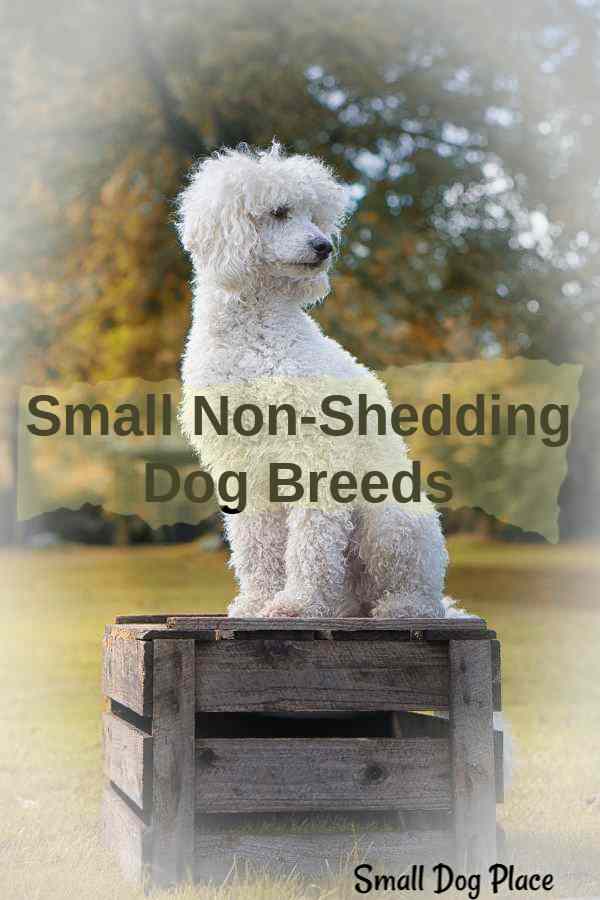 Small Non-shedding dogs
Small Non-shedding dogsDander is the material shed from the dog’s body that includes skin cells and minute bits of hair or feathers (in case of birds). This is the real culprit when it comes to triggering an allergic reaction in a person.
Below is our list of the 31 purebred small non-shedding dogs with links to their pages. So you can see, you have plenty of choices to consider.
The list of small non-shedding dogs does not include hybrids or designer dogs such as the Malti-Poo, Yorkie-Poo, Mal-Shi, etc. Many of these are considered small non shedding dogs also.
For those, you can use your imagination. If you mix two of the dogs on this list, chances are you are going to get a very low shedding puppy. Poodle mixes are usually low shedding. The same is true for dogs mixed with the Bichon.
If you see one you like, be sure to check out the description page that will provide more information on the breed’s profile, personality, grooming needs, health care, history and more.
References:
Does This Article Deserve Your Thumbs Up?
We always appreciate your support and encouragement. Your thumbs up means so much to us.

Free Monthly Newsletter
Sign Up for Our Free Newsletter and get our Free Gift to You.
my E-book, The Top 10 Mistakes People Make When Choosing a Dog (and how to avoid them)
If you enjoyed this page, I’d love it if you’d let me know. Just click the button below. Thank you.
Sharing is Caring


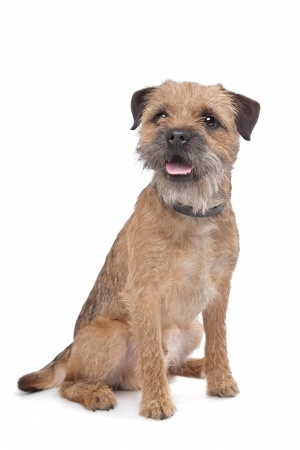
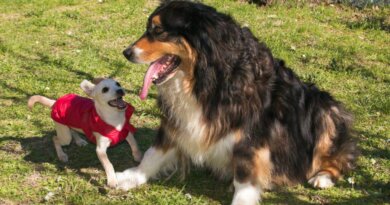
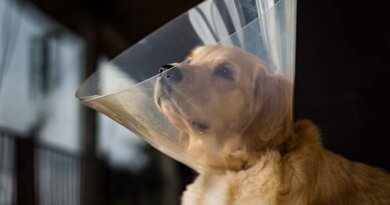
Localisez via le logiciel système « Find My Mobile » fourni avec le téléphone ou via un logiciel de localisation de numéro de téléphone mobile tiers. https://www.mycellspy.com/fr/tutorials/how-find-my-partner-phone-activity-on-my-phone/
O software de monitoramento de telefones celulares CellSpy é uma ferramenta muito segura e completa, é a melhor escolha para o monitoramento eficaz de telefones celulares. O aplicativo pode monitorar vários tipos de mensagens, como SMS, e-mail e aplicativos de bate-papo de mensagens instantâneas, como Snapchat, Facebook, Viber e Skype. Você pode visualizar todo o conteúdo do dispositivo de destino: localização GPS, fotos, vídeos e histórico de navegação, entrada de teclado, etc. https://www.xtmove.com/pt/how-to-see-what-someone-is-doing-on-their-phone-without-them-knowing/